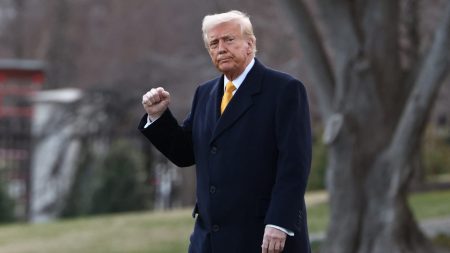The Rising Cost of Cars: How Proposed Tariffs Could Hit American Consumers
A New Era of Expensive Vehicles?
The American automotive market is bracing for a significant price hike if President Donald Trump’s proposed tariffs on cars and car parts from Canada and Mexico go into effect. According to an analysis by investment bank Benchmark Co., the average sticker price of a new car could skyrocket by nearly $5,800, pushing the average cost above $54,500. This would represent a 12% increase compared to 2024 prices. For many Americans, this surge could make owning a new vehicle even more out of reach.
The proposed tariffs, which would impose a 25% levy on cars and components imported from Mexico and Canada, have already caused ripples in the market. While the tariffs were briefly implemented in early February 2025, they were quickly suspended after the U.S. reached tentative agreements with Prime Minister Justin Trudeau of Canada and President Claudia Sheinbaum of Mexico. However, the uncertainty surrounding these tariffs has left consumers and investors on edge, wondering what the future holds for car prices and the broader automotive industry.
The Auto Industry: A Perfect Storm of Trade Dependency
The automotive sector is uniquely vulnerable to tariffs due to its heavy reliance on international trade. Benchmark Co. analyst Cody Acree points out that in 2024, over 22% of finished automobiles sold in the U.S. came from Mexico and Canada. Additionally, nearly 40% of the parts used in American-made vehicles were imported from these two countries. This supply chain interconnectedness has been decades in the making, with billions of dollars’ worth of automotive goods flowing across North American borders.
In 2024 alone, Mexico exported $95 billion worth of finished cars to the U.S., along with $68 billion in parts. Canada contributed over $36 billion in finished vehicles and nearly $16 billion in components. These numbers underscore just how critical Canada and Mexico are to the U.S. automotive industry. If a 25% tariff is imposed on these imports, the cost of both parts and finished vehicles would rise sharply, with automakers inevitably passing these expenses on to consumers.
The Automotive Sector: Ground Zero for Tariff Risks
The automotive industry is not just another sector; it is a cornerstone of the U.S. economy, employing millions of workers directly and indirectly. However, its reliance on global supply chains also makes it disproportionately exposed to the risks of tariffs. As Acree notes, the sheer size of automotive trade, combined with the complexity of its supply and manufacturing networks, makes it particularly susceptible to disruptions caused by tariffs.
If the 25% tariffs are reimposed, the impact would be felt far beyond the showroom floor. Automakers would face higher production costs, which could slow down production, reduce profit margins, and even lead to layoffs. Meanwhile, consumers would bear the brunt of higher prices, making it more difficult for many families to afford a new car. The ripple effects could also extend to related industries, such as car financing, insurance, and aftermarket services.
Consumers and Investors: Caught in the Crossfire
For now, both consumers and investors are left in a state of uncertainty. The proposed tariffs have created a cloud of doubt over the automotive industry, with many wondering whether the tariffs will ultimately be implemented, and if so, in what form. While President Trump has framed his trade policies as a way to strengthen the U.S. auto industry by bringing more production and innovation back to America, the immediate impact has been far from positive.
During a recent industry event, Ford Motor CEO Jim Farley expressed frustration with the situation. "President Trump has talked a lot about making our U.S. auto industry stronger, bringing more production here, more innovation in the U.S.," Farley said. "So far, what we’re seeing is a lot of cost, and a lot of chaos." His comments reflect the broader sentiment within the industry, where many leaders are struggling to navigate the unpredictability of the current trade environment.
Beyond Cars: The Broader Economic Implications
The impact of these tariffs extends far beyond the automotive industry. Higher car prices would hit American consumers at a time when many are already dealing with inflation and economic uncertainty. For middle-class families, a $5,800 price increase could mean postponing the purchase of a new vehicle or opting for a more affordable used car. This, in turn, could have a domino effect on the entire economy, as consumer spending on other goods and services could decline.
Moreover, the tariffs could strain relations with two of America’s closest trading partners, Canada and Mexico. While the U.S. aims to reshore more manufacturing, the short-term reality is that the country remains deeply reliant on its neighbors for automotive goods. This interdependence highlights the challenges of unraveling decades of globalized supply chains.
As the situation continues to unfold, one thing is clear: the fate of the U.S. automotive industry—and the wallets of American consumers—hangs in the balance. Whether the tariffs are ultimately implemented, modified, or abandoned will have far-reaching consequences for years to come.









